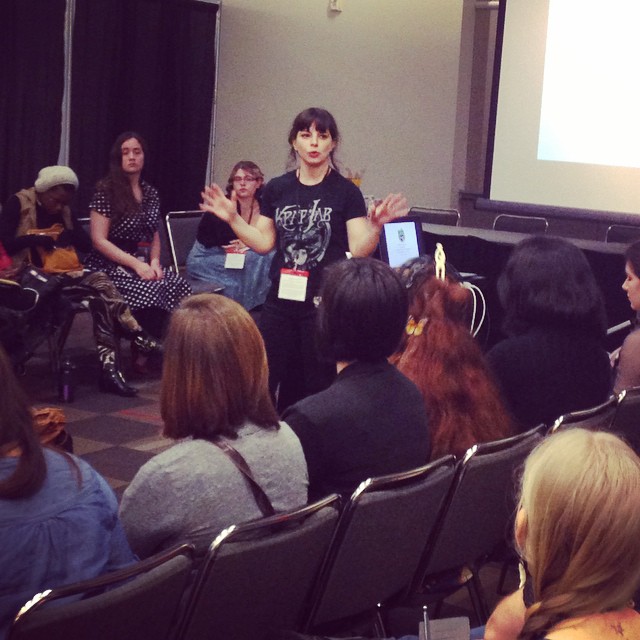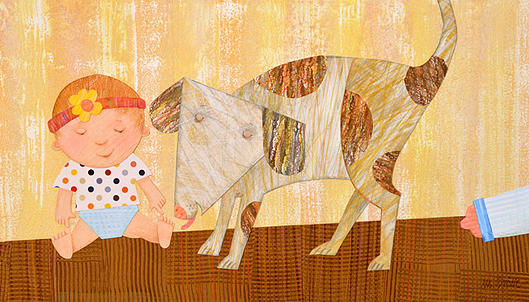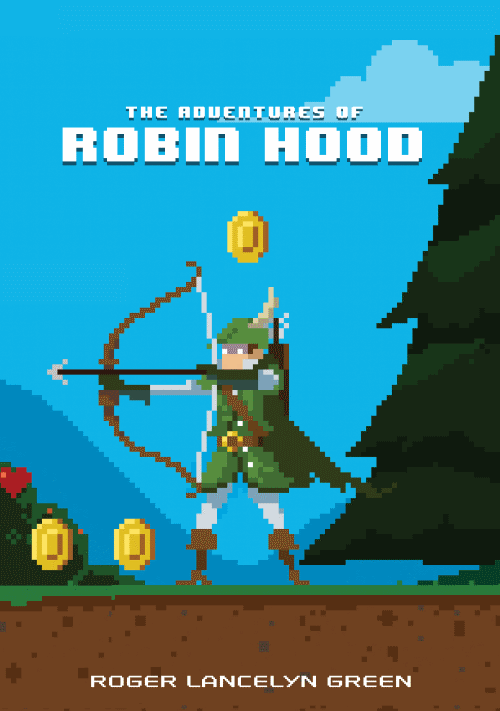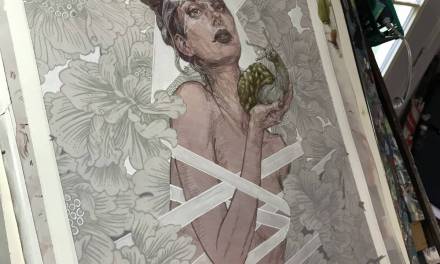Transitioning from Illustration Work to Show
-By
business practices within the art world. Back in caveman days, when I was a
student at Cornish College of the Arts, we had such a class that the senior
students took prior to graduation. We talked about copyright laws, free lawyer
consultation groups, and preparing your portfolio to show at galleries. We
glossed over exclusivity clauses in dealing with galleries, but beyond that,
the gallery world (even for a fine art student such as myself) was pure
mystery. It seemed as if it were a private club that only the truly worthy
could get into, and the rest of us were out in the cold. Our instructor seemed
reluctant to give us much more information on showing our work; we felt as if
she were shutting us out (she was a working artist), that maybe we had to
somehow earn this magical information through some form of naïve humiliation
called Pounding the Pavement.
it seemed more cut-and-dry than trying to be a fine artist. I pretty much
avoided the gallery scene, which wasn’t unusual for the average art school
graduate: majority of my friends just went straight into graduate school, or
taught a little bit, or simply dropped out altogether. We weren’t prepared for
the onslaught of rejection from various galleries, the rolling eyes of the
bored directors sitting in the exhibition room as we enquired about a portfolio
review, being told again and again to come back in a couple years, or that the
gallery wasn’t the right fit, or simply, we weren’t good enough. Mostly, we
heard nothing at all.
It wasn’t intentional, it evolved over time due to having lots of blank walls
in my art studio I shared with three other artists. Over a few years, what
originally was just for a lark now becomes an oiled machine. Lots of mistakes
were made and corrected, gallery mentorships were developed between myself and
other senior gallery owners, and the gallery world simply unlocked itself. Now
it makes sense, the mystery is revealed, and…it’s nothing really special. If
anything, it’s a volatile, luxury-item business that peaks and falls much like
the stock market, and the only magic going on is the ability for good
gallerists to recognize when an artist is a good fit for their business, and
the prediction process of how well a show will be received 12 months in
advance.
one, developing a relationship with one, and keeping that relationship. The key
word is “relationship”. A gallery is taking an artist on as a kind of business
partner: the art may be created by the artist but the curation, marketing, and
branding of the show is all gallerist work. If there is discord in the
relationship, the resulting show can be a total disaster. That could ultimately
be a financial burden for both parties.
 |
| Julie giving her Gallery Bootcamp at Spectrum Fantastic Art Live |
importantly, let’s start with editing your portfolio. Much like a portfolio
review with an art director, you need to carve down to the pieces that best
represent the direction you are going. I don’t care what you did in college, or
even what you did a couple years ago; I need to know where you are going.
Remember, shows take place in the future.
styles, genres, etc, a gallerist cannot tell what they will wind up getting from
you. I want a clear idea, and I don’t have time to dig around trying to figure
you out.
the best fit for you. A gallery of contemporary art? A gallery that specializes
in experimental media? Maybe a gallery that allows you to rent a wall (co-op
gallery) with no particular genre? Depending on where you live, check out the
galleries in your surrounding area. If they have a website, look at their
current shows, their past shows and if possible, upcoming shows. Do you see a
correlation with what you’re doing? If not, move on, eventually checking out
galleries outside your region. It’s usually best to brand yourself locally
before attempting a jump across the country. Most people look up galleries via search
engines online: often galleries will tag their websites with the appropriate
genre of what they support, so it’s pretty simple to shop around online.
 |
| Bastien Lecouffe-Deharme, The Queen of Misfortune, from the Brittany to Cascadia show |
your work. The next step is to look for information regarding their submission
requirements. Most galleries will list these on their website. If not, you may
email the gallery requesting submission guidelines. This is not the same as
submitting; don’t use this as an opportunity to talk about yourself or your
work.
instructions to the letter. If they ask for five jpegs of your work, send them
five. If they ask for a CV (“curriculum vitae”, fancy Latin for a resume), send
them a relevant CV. If they want a short statement about your work, send them a
short statement. And if they are currently not accepting submissions, you may
ask them if there is a time in the future they would accept them, otherwise,
respect that they are not looking for a solicitation from a new artist.
not necessarily see it that way. Keep in mind that a gallery understands its
clientele, local region, and curatorial vision much better than you do. You may
be a risk to them that they can’t take, or maybe your work is awesome, but they
know their clients may not really go for that kind of art. You may be too green
for them and need more time to build up your body of work and resume. Rejection
is hard and sometimes humiliating, but often it’s done on a very non-personal
level. I’ve seen great portfolios from really talented artists that I know I
would have a very hard time selling to my public. Sometimes I get a sense that
the artist is going a direction that my gallery isn’t; I’m not going to change
the artist’s direction, that’s not my business, and I would be irresponsible if
I tried. It’s all about the right fit at the right time.
 |
| Current Exhibit at Krab Jab: Stephanie Pui-Mun Law Immortal Ephemera |
or curator does not mean you get a free pass on a show. I have many artist
friends whom I adore, but would be a bad fit for the gallery for a variety of
reasons. Additionally, they STILL need to jump the same hoops as everyone else
if they want consideration. It’s not personal, it’s business. Don’t mix that
up, or you might wind up in a very awkward situation.
they’ve given you a statement of the show (this is common in group shows), the
dates, deadlines, etc. Or maybe they’ve offered to represent your work. What
now?
Development & Contracts
some of the logistics of showing. You will need to know the following things
(and its okay to ask):
-what are size requirements? How much wall or display space do you get? -are there medium requirements (such as 2D/3D, digital vs nondigital media)? -what is the best mode of communication? Most folks work well with emails,
some
like phone calls. -does the art need to be submitted prior to acceptance for the show? -does the art need to be specifically created or designated for the show?
–terms of the show: dates and
anything specific to that show, including whether or not there is an opening
reception.
–shipping or delivery of art. Most
of the time, artist is responsible for the cost and management of the delivery
of the art to a gallery. This can vary from gallery to gallery, though, so
don’t assume what one place does is the norm for everyone else.
–damage/loss/theft: gallery should
list their terms on this. Not all galleries have security or insurance.
Sometimes you can insure your own art depending on your own business insurance.
Gallery insurance is actually really expensive to have, but there should be
some kind of safeguard nonetheless.
–exclusivity of the artist, the region,
the art: many smaller galleries do not require artists to remain exclusive
to their gallery, but it’s something you’ll need to consider seriously. Having
a gallery represent you can have benefits if you have a good relationship with
them, but the drawback is that you cannot show anywhere else without their
permission. Regional exclusivity means that you cannot show within a specific range
(usually marked in miles or by city) of the gallery. This keeps you from
unwittingly flooding the market in a region. Most commonly, your contract will
list exclusivity to the art in the show, which means that for a specific period
of time, the gallery has sole right to represent that artwork and receive
commission of sales. This may or may not extend past the end date of the show.
–marketing obligations, if any: look
for what the gallery will do to market the show. Handbills, postcards, mailing
lists, web listings, social media, articles, and receptions are fairly
standard. Some galleries can afford advertising campaigns. You may be required
to shoulder some of the burden of advertising your show to your fans, mailing
list, etc.
–termination of show clause: this
can be in regards to both you and the gallery. Gallery may refuse to show your
work for a specific reason – these terms should be in the contract.
Additionally, there may be terms if one or both parties drop out of a show. It
can be financially devastating to have someone drop a show – gallery OR artist
– especially if it happens right before the opening.
 |
| Sara Winters, Serra, from the Marriage is a Work of Art show |
don’t need to confirm right away, but be mindful that galleries are on
schedules and can’t wait for you to make up your mind. If you say no, they need
to be able to spot fill in a timely manner.
acceptable too. If there is no contract, be very wary: they are meant to
clarify terms and conditions for both parties, so everyone is on the same page.
Most galleries have at the very least a written agreement stating terms of the
show that both artist and gallery rep sign, but most have contracts akin to
what an illustrator is used to: a Bible-thick agreement with several conditions
covered that should be legal to their US state or whatever regional legal
system they are bound to.
contract:
retail sales. Standard rates are 40-50% for an
to them).
discuss it with your gallerist. You can have a lawyer review it for any clauses
that are legally unbinding or unlawful.
gallerist first, and make sure they agree before amending the contract. Often
they will amend it for you based on your request, and have both of you initial
it.
been signed.
 |
| Upcoming Exhibit: I’ll Read You A Story: Children’s Book Art |
and Delivery of Work: A Simple Case of Organization and Time Management
a show and bought yourself a celebratory beer, you should sit your butt down
and organize a few things. For some reason, organizing is a painful disease
that many artists and illustrators have a huge fear of and steer clear from,
especially when it involves time management. I feel your pain, I’m the same way
by nature. But I have some Nurture for you that does, amazingly, work.
advance, giving an artist “plenty of time” to pull together a body of work.
This is BS thinking for the artist, and I’ll tell you why: we are Time Idiots.
We are much like Sesame Street Muppets with time. It’s either “Far Away” time,
or “Right Now” time. To most of us, 12 months is “Far Away” time. So we put our
work off. There’s other stuff to do, right? Maybe a couple of “Right Now” or
“Really Really Late” contract jobs, or mom is sick and we gotta make sure she
gets to the doctors and takes her meds and eats, or our kid needs something for
a school play, plus all that really juicy Facebook stuff going on and there’s a
series on Netflix we need to catch up on. Dammit, now the cat is sick. Now
you’re sick and all your contract jobs are “Really, Really Late”. Then, that
call comes from the gallerist: “we’ve got three months until opening, can I see
your progress?”
studies and no finished paintings. This is bad. You better leave the country
and live incognito somewhere in Belize, because nothing can fix this. Thank you
BS Artist Muppet Idiot Thinking for this unpleasant scenario. (end scene)
calendar? Great, let’s start there. Sit down and put in all relevant dates
between now and Show Opening (including Show Opening date). This should include
delivery date, photography date, artist statement date, pricing and label
information date, contract due date. Make sure you have reminders automatically
plugged in to your calendar entries for at least a week in advance.
backwards. To get your work in on time, you need to determine how long it
takes to ship/deliver your art. If you are overseas or in another country, take
anything such as weather and customs into account as these could delay your
delivery. If you know how long it normally takes to ship ground USPS for ten
paintings, for example, you now know when your last day to ship would be. Put
that in your calendar.
you going to frame with? How long will it take? Do you need a stand for your
sculpture?). Put that into the calendar. Now, photography: are you going to
photograph your work yourself or hire someone? What’s their schedule normally like
and when is the latest you can do it? Put that in your calendar.
tricky part: managing your own schedule and being honest with your
workload. If you are a working illustrator or commercial artist, make sure you
plot out your work schedule for the period of Now until art gets to the
gallery. You may realistically have maybe a day or two a week to do studio work
for a show, so you’re going to have to budget that time and your gallery show
workload. That means that you may only have the means to create two medium
paintings a month if nothing goes wrong.
life happens. This may further decrease your studio time. Don’t panic, though,
this is actually a sanity check. And this leads us to a very important part of
your organizing: communication with the gallerist.
and Artist Relationship
and sane while working on a show. A seasoned gallerist has seen and heard it
all, knows when to call BS, but also knows how to creatively solve problems.
gallerist/curator will work with you on the vision and direction of your show.
They will be able to address your concerns (such as your time issues) with
viable solutions you may not have even considered. Maybe you’re being
overachieving and they need to remind you to keep things simple, or maybe you
didn’t consider that the graphite studies are just as showable as the final piece.
Maybe your fears that you’re not on target are way off, although sometimes we
do have to give you a gentle kick to get moving.
address both the good and the bad of managing the project of your show. Yes,
sometimes you may disappoint the gallerist with your poorly timed surgery and
therefore smaller body of work, but we understand that life happens, and it’s
far easier for me to make adjustments early in the game than get blindsided
when I have no recourse to fix a situation.
0
0
1
2494
14217
HBGUSA
118
33
16678
14.0
Normal
0
false
false
false
EN-US
JA
X-NONE
/* Style Definitions */
table.MsoNormalTable
{mso-style-name:”Table Normal”;
mso-tstyle-rowband-size:0;
mso-tstyle-colband-size:0;
mso-style-noshow:yes;
mso-style-priority:99;
mso-style-parent:””;
mso-padding-alt:0in 5.4pt 0in 5.4pt;
mso-para-margin-top:0in;
mso-para-margin-right:0in;
mso-para-margin-bottom:10.0pt;
mso-para-margin-left:0in;
mso-pagination:widow-orphan;
font-size:11.0pt;
mso-bidi-font-size:10.0pt;
font-family:Calibri;
mso-ascii-font-family:Calibri;
mso-ascii-theme-font:minor-latin;
mso-hansi-font-family:Calibri;
mso-hansi-theme-font:minor-latin;}
gallery is not only good for the show, but can open doors in many other ways.
We gallerists have a lot of friends out there in the press, at other galleries,
with art directors, with convention/fair directors, with artists. I’m more
inclined to refer someone I find to be solid and trustworthy than someone who
has a problem checking in or getting back to me.
_________________________________
Krab Jab Studio is the workplace of artists Julie Baroh and Mark Tedin and
writer Chris Pramas. With a monthly rotation of guest artists in our gallery,
Krab Jab has developed a steady following in the funky, industrial artist’s
haven known as Seattle’s “Georgetown” neighborhood.
featuring art by local artists as well as original art by publication and
game illustrators worldwide.
founders Julie Baroh and Kyle Abernethy. We found it to sound funny, and it
stuck, even after Kyle left in 2011. Previous Krab Jab artists have included
sculptor Gabe Marquez and painters Michael Hoppe, Milo Duke and Sandra
Everingham.
features illustrations by leading children’s book artists in the picture book
genre, including Scott Gustafson, Cory Godbey, Jerry Pinkney, Jon J Muth, Marc
Brown, Ruth Sanderson and many more. Runs July 11 – September 5.
surroundings. Training as a sculptor and printmaker at the prestigious Cornish
College of the Arts, she stumbled into illustration in the game industry quite
by accident, working on games such as Magic:
the Gathering and Legends of the Five
Rings in their early inception. After a 6 year stint as a freelance
illustrator, Julie worked in the software industry (“to exercise my left
brain”) for several years before returning to her first love, art. Although she
considers herself first and foremost an artist, her mad organizational skills
and background in curation was a natural fit for the up and coming Krab Jab
Studio gallery, which she currently runs with an iron fist, releasing shows at
a fevered pace.
illustrator), speaks at conventions on the subject of gallery preparation for
artists, and writes for her popular blog on www.krabjabstudio.com. She currently lives in Seattle with her two
Boxers and exhausted husband.
_________________________________








great info, thanks!
Great advices, thanks !
This pointed out some seriously important info that I really hadn't thought of before. Thank you and thanks to all the Muddy Colors contributors.
Great article Julie! Thanks for guesting here!
This is a fantastic post! Thank you for sharing!